If you’ve ever dealt with plantar fasciitis, you know that nagging heel pain can make running miserable. And if you don’t address it, it can creep into your everyday routine. Today we’re looking at the best running shoes for plantar fasciitis.
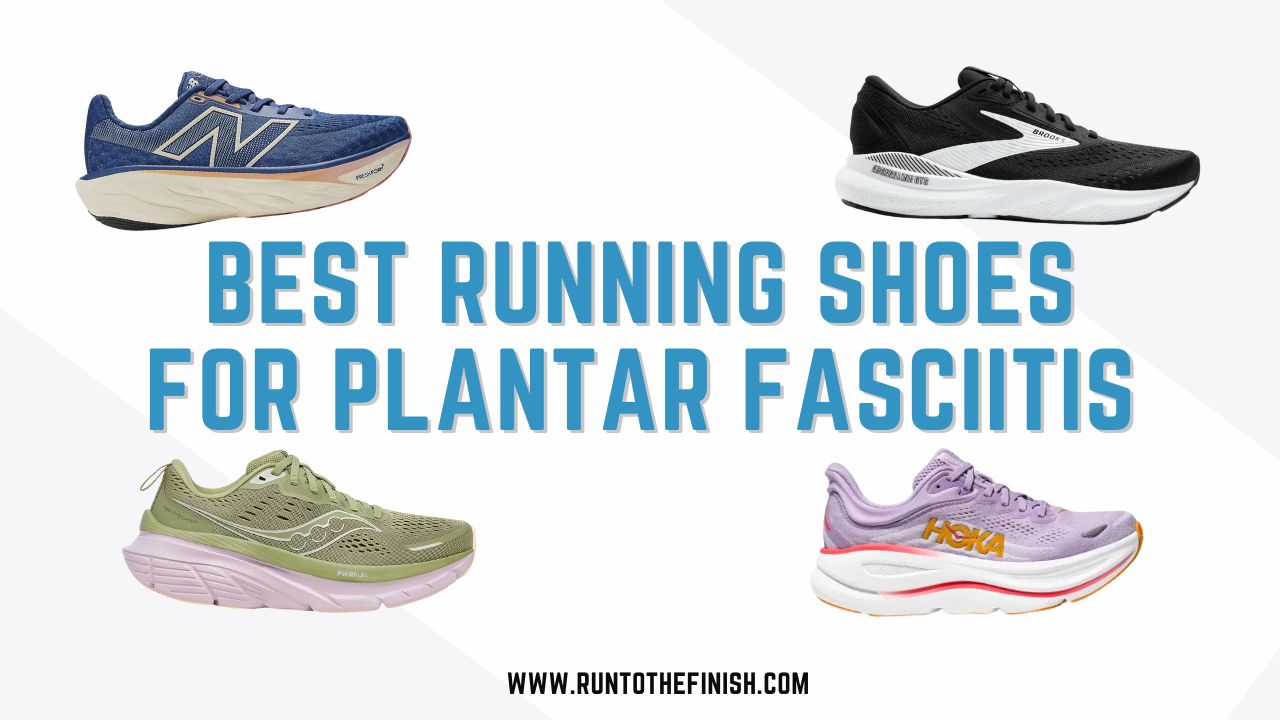
Plantar fasciitis showed up for me after running the London Marathon in 2022. Honestly, I wasn’t too surprised. By that point, I had trained for and run a marathon in both 2021 and 2022, putting my feet through a lot of repetitive stress.
Even though I was the runner who always did my dynamic warm-ups, stuck to strength training, and followed a solid training plan, that constant strain on my plantar fascia eventually caught up with me. Which is not to say it happens to everyone!
It didn’t take long to realize that the shoes I was running in, and even the ones I wore day to day, played a huge role in the lingering heel pain.
To get some expert advice, I reached out to physical therapists who regularly treat runners dealing with plantar fasciitis. Their consensus? It depends on the runner, but certain features can help.
Duanne Scotti, a physical therapist and running coach, explained that “no matter the foot type, a combination of a higher stack height, softer midsole, and a higher heel drop will help take the stress away from the plantar fascia.”
With that in mind, I’ve put together a list of the best running shoes for plantar fasciitis, based on recommendations from PTs, feedback from our gear testers, and even my personal experience.
10 Best Running Shoes for Plantar Fasciitis
I’ve bought and returned so many shoes, only to have them cause my plantar fasciitis to flare up again. Finding the right pair can sometimes feel impossible! After a lot of trial and error, I think I’ve finally gotten to the sweet spot of knowing what types of shoes are going to work.
I’m happy to report a lot of them are actually on this list!
Keep reading to learn how to pick the right shoes and get a few tips for managing that annoying heel pain.
Best for Long Runs – Saucony Guide
Saucony not only paid attention to the support below, but uses the upper for additional stability. It wraps around your foot, helping you feel more secure in the shoe.
It incorporates Saucony’s PWRRUN cushioning, with the goal of being a moderate cushion shoe that offers inherent support as well which was something that many traditional stability shoes lacked. That’s my kind of shoe.
And as noted the stability is there, but without being aggressive so you aren’t feeling it…it’s just doing the job.
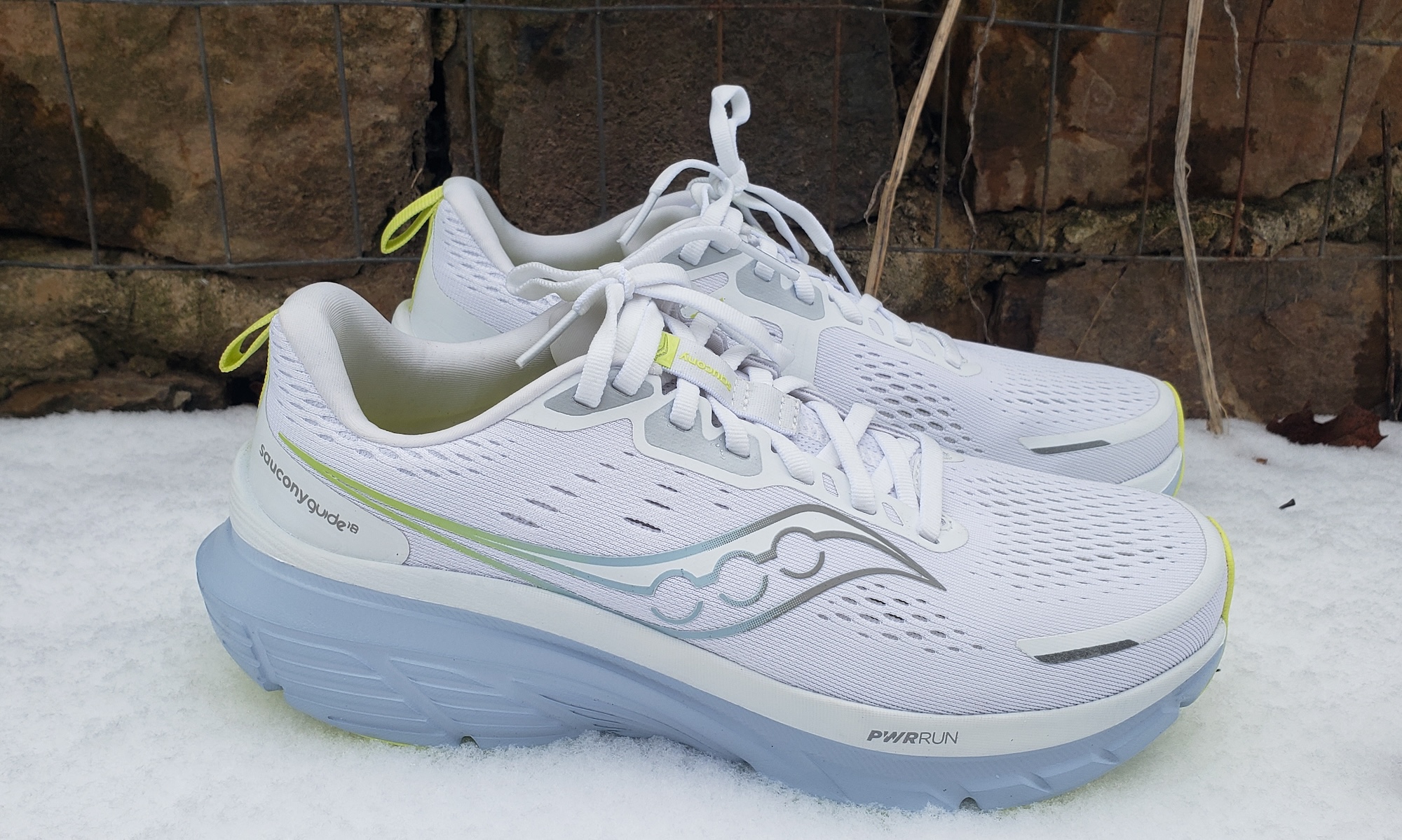 It’s not overly built up, no massive stack height, no crazy cushioning. Just a solid daily trainer that is going to provide you with some nice cushion and decent support.
It’s not overly built up, no massive stack height, no crazy cushioning. Just a solid daily trainer that is going to provide you with some nice cushion and decent support.
If you’re looking for a wider fit, they do offer both wide and extra wide sizes to accommodate more feet!
- Weight: 9.6 oz Men’s, 8.6 oz Women’s
- Heel Drop: 6 mm
- 13 Colors for Women’s, 12 for Men’s
- Available in wide and extra wide
- Available on Saucony.com for $140
- Read more in our review of the Saucony Guide 18 here >>
Best Stability Shoe – Brooks Adrenaline GTS
The Brooks Glycerin has been a favorite of runners for more than 20 years, it’s up to model 34 if that says anything!
It’s great for everyday runs or those long runs on the weekends. It has a nice solid structure with flexibility offering support for people with high arches, but can also be a solid option for flat feet with a special insert. Its GuideRails support system helps your foot move more naturally in each step.

- Weight: 10 oz Men’s, 8.8 oz Women’s
- Heel Drop: 12 mm
- Available in 12 colors
- Available in wide for some colors
- Available on Brooksrunning.com for $140
Best for Speedier Runs – Asics Novablast
While this is a neutral shoe, with no guiderails or anything for stability, it absolutely has some of that built in to the design. The width of the platform from toe to heel reduces pronation and provides a really good ride.
This is the first shoe that Asics has used a full length FF Blast Maxunderf oot to help give that spring feeling with each step.
Even though it’s another massive stack height shoe (41.5mm), it just doesn’t feel unstable. It felt like a comfortable ride that you could repeat over and over.
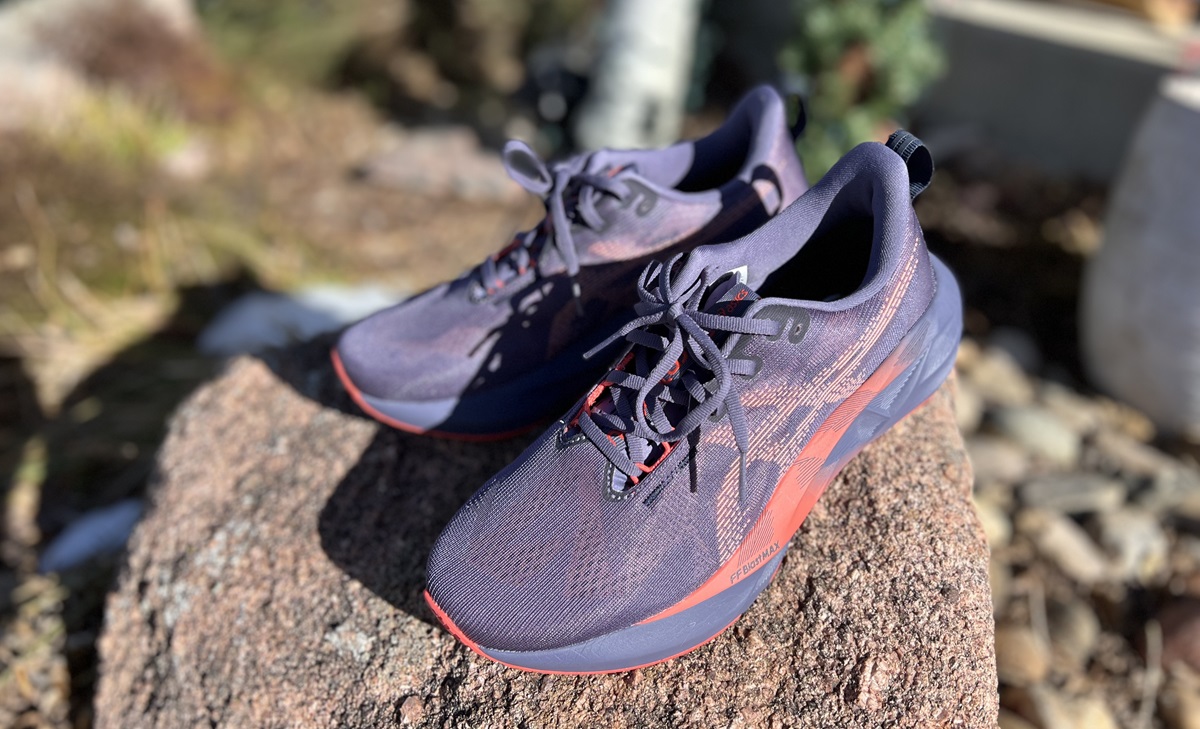
The Novablast is going to feel more energy return than the more cushioned Nimbus and yet not as speedy as the Superblast.
- Weight: 9.1 oz Men’s, 7.9 oz Women’s
- Heel drop: 8mm
- Available in 8 colors
- Not available in wide
- Available at Asics.com and Zappos $160 (my favorite for easy returns)
- Read our full review of the Asics Novablast 5 here >>
Best Max Cushioned Shoe – Asics Gel Nimbus
These are going to be a big ol’ cushioned ride. Even with the 42mm stack height, they have somehow still managed to make this shoe feel stable. It’s actually the plushest shoe in the Asics line up currently!!
This is a max cushion running shoe for recovery runs to long easy miles that has some bounce. Even though it looks like you’re going to immediately sink into the shoe, there’s a nice mix of plush and firm feel underfoot.
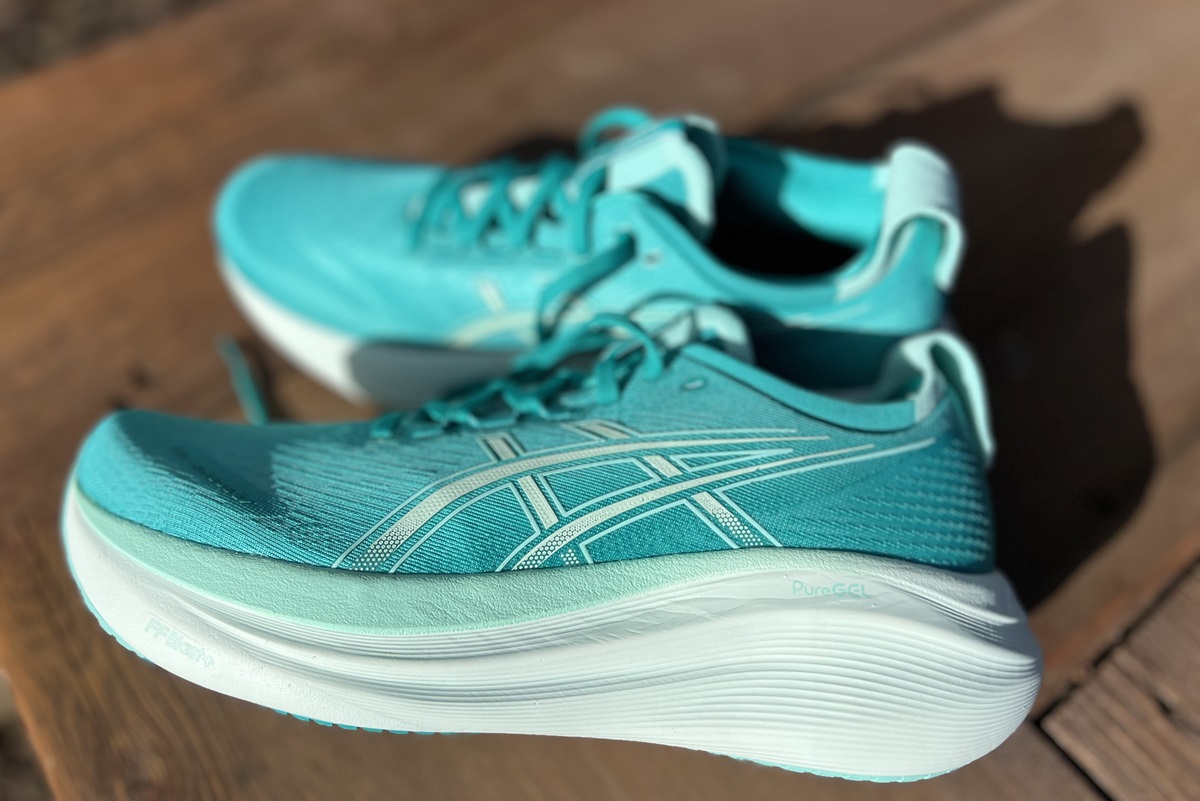
I actually have these right by my treadmill so that I can grab them for my recovery days.
This is a running shoe that’s great in your rotation for recovery days or possibly for some long runs. I say some because you need to make sure that you don’t allow yourself to sink in the cushion when fatigued, that can cause lower back pain while running.
- Weight: 10.7 oz Men’s, 9.2 oz Women’s
- Heel toe drop: 8mm
- Available in 4 colors
- Not available in wide
- Available at Asics.com and RunningWarehouse.com $165
- Read our full review of the Asics Gel Nimbus 27 here >>
Best Max Cushion Runner-up – New Balance 1080
If you are used to running in a zero drop shoe or want to stay within a 5-6mm heel drop, the New Balance 1080 is a great option if you have plantar fasciitis. I’ve actually grabbed this one a lot lately, not so much for running but for long walks!
This is going to fall under the category of a max cushioned trainer that can take you for many miles. It’s a reliable shoe that’s durable!
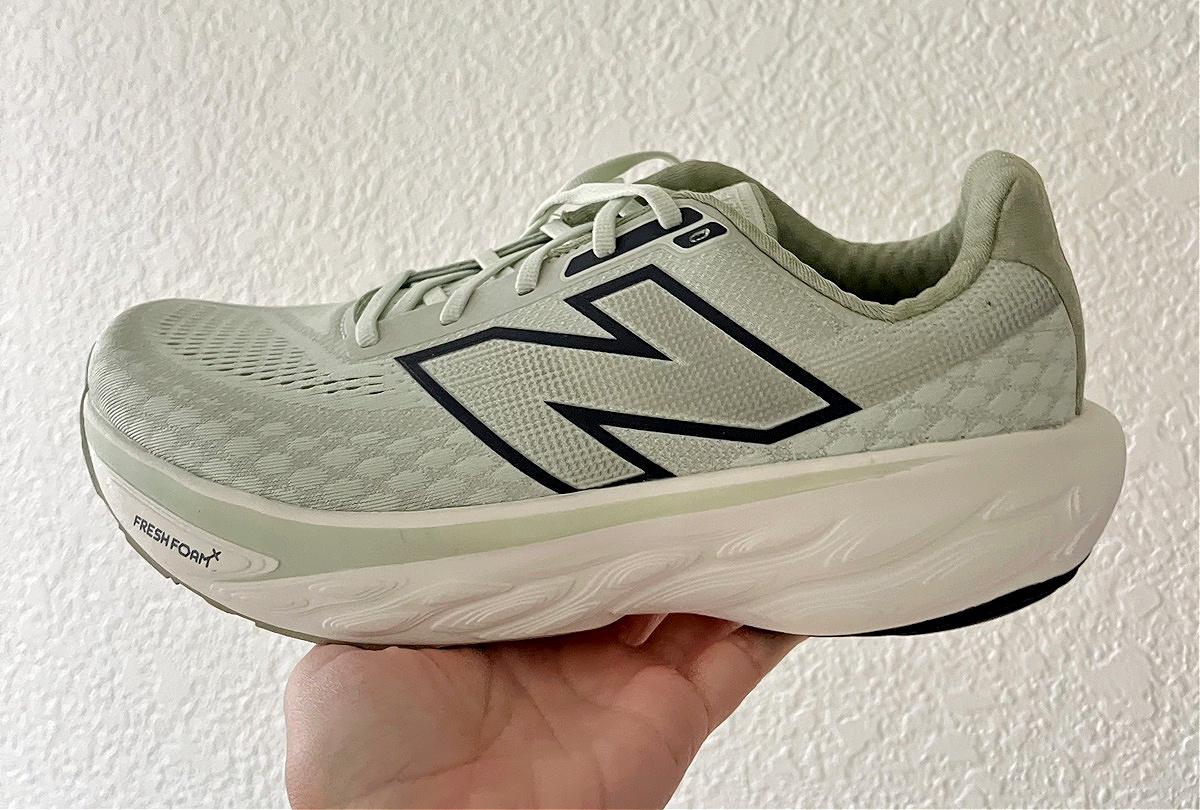
The Fresh Foam midsole provides excellent cushioning and shock absorption, making it perfect for runners who enjoy long-distance running. Remember this isn’t a plush shoe, but cushion that still responds. The upper part of the shoe is made of Hypoknit, which is a soft and breathable material that provides a comfortable fit.
- Weight: 10.5oz Men’s, 8.3 oz Women’s
- Heel Drop: 6mm
- Available in 8 Colors
- Available in Wide and Extra Wide
- Available on NewBalance.com for $165
- Read our full review of the New Balance 1080v14 here >>
Best for Easy & Recovery Days – Hoka Bondi
The Hoka Bondi can be found on a lot of our best shoe lists. It’s just an all around good
While it’s not built for speedwork, the Bondi 9 still offers a touch of bounce thanks to the combination of its supercritical EVA foam and the smooth MetaRocker midsole design. The well-cushioned area in the heel and overall support is going to help if you have plantar fasciitis!
Even with all that cushioning, the Bondi 9 still manages to feel lightweight, which is a huge win for a shoe this plush.
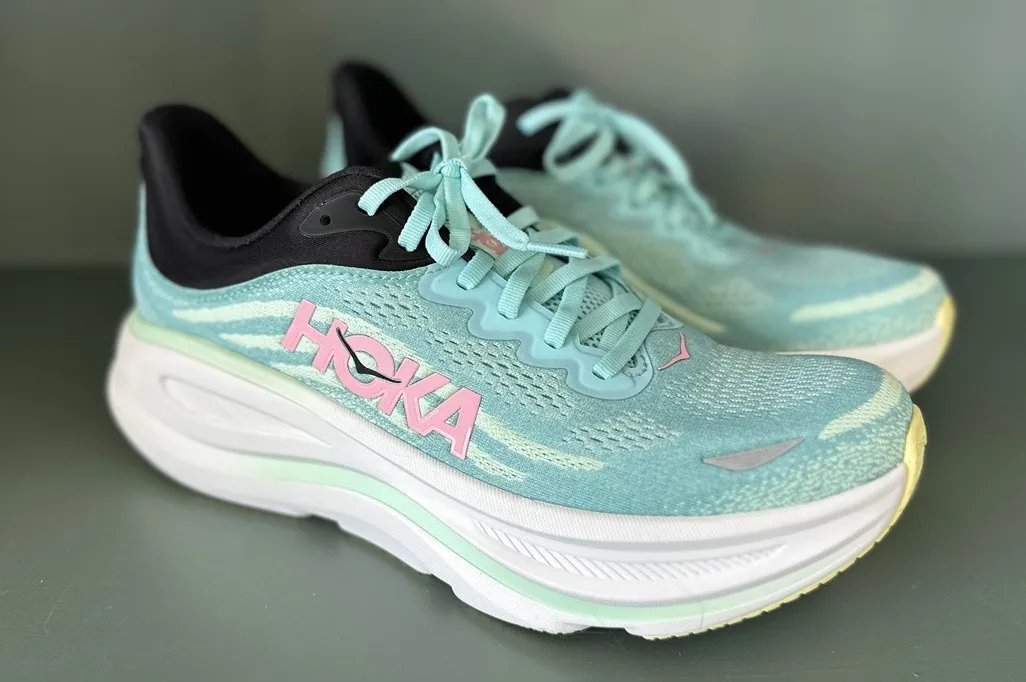
Hoka also upped the stack height by 2mm, bringing it to 43mm in the heel, and while that might sound like a lot, it didn’t feel bulky or unstable at all.
- Weight: 10.5 oz Men’s, 9.3 oz Women’s
- Heel Drop: 5 mm
- Available in 6 colors
- Available in wide and extra wide (in limited colors)
- Available on Hoka.com for $170
- Read our full review of the Hoka Bondi 9 here >>
Best for All Day on Feet – On Cloudsurfer
For a daily trainer up to 6 miles or so, these have the right amount of energy return and cushion while feeling breathable and secure on your feet. The cushioned midsole of these shoes isn’t overly plush, which does feel like a departure from prior Cloudsurfer models. The changes to this shoe’s midsole still feel extremely comfortable.
At 9oz, the Cloudsurfer 2 is lightweight but feels supportive enough to protect you through a variety of runs. It balances performance with weight in a way that makes this a reliable, smooth trainer.
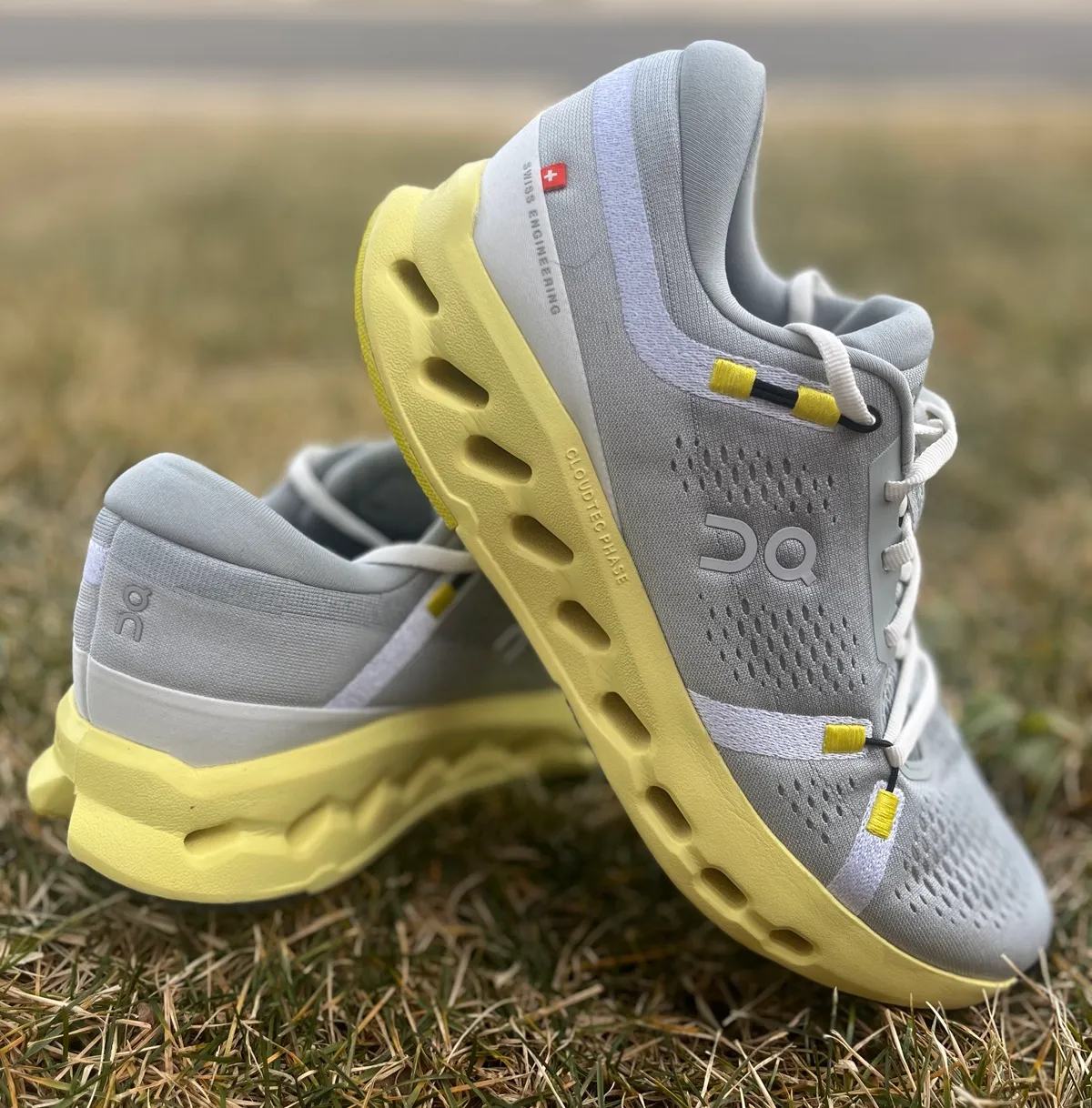
Cloudsurfer 2 is a moderately cushioned, lower stack height, running shoe for shorter easy runs that’s also high on our list of great walking shoes.
- Weight: 9.2 oz Men’s, 7.9 oz Women’s
- Heel drop: 9mm
- Available in 4 colors
- Not available in wide
- Available at On.com for $160
- Read our full review of the On Cloudsurfer 2 here >>
Best Daily Trainer – Saucony Triumph
When you need that shoe with enough cushion to get through a lot of weekly miles, the Triumph is a great choice. It won’t say it’s the lightest or maybe most breathable of all my running shoes, but I enjoy it.
In fact, you’ll see this included on our list of best treadmill running shoes. With a slightly higher drop at 10mm, that’s actually a benefit on the treadmill to help the Achilles not stretch as far. Combine that with a cushion that feels fantastic, but doesn’t deaden your step and it’s a winner.
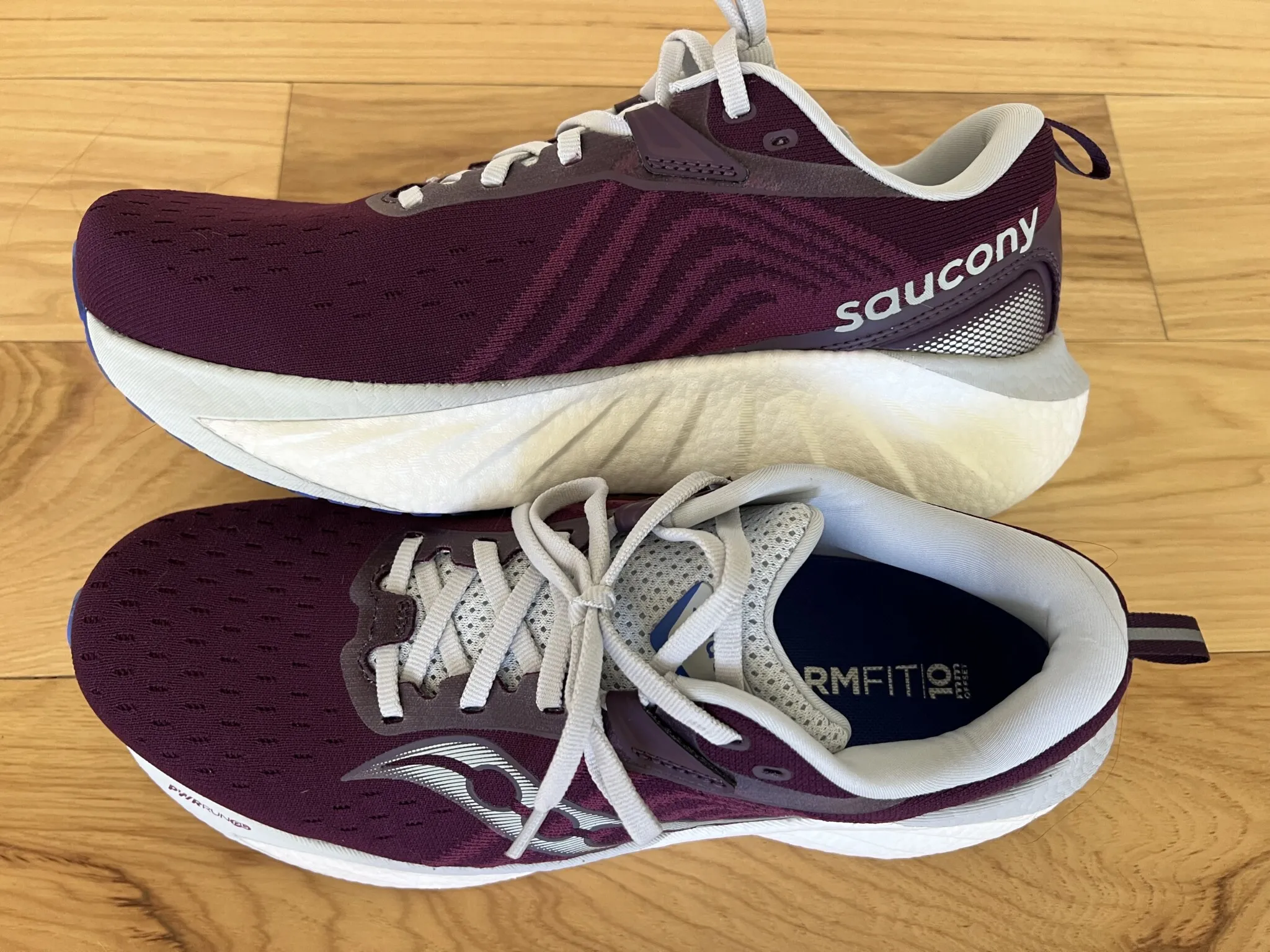
- Weight: 10.1 oz Men’s, 8.8 oz Women’s
- Heel Drop: 10 mm
- Available in 13 colors
- Available in wide
- Available now on Saucony.com $160
- Read our complete Saucony Triumph 22 review >>
Best Zero Drop Shoe – Altra Torin
The Altra Torin has emerged as a game-changer in the world of running footwear. A zero drop shoe that has enticed many to test out the lower heel drop running life!
Altra’s EGO MAX midsole formulation is a good blend of protection and energy return, plain and simple. The EVA/TPU blend does a nice job of absorbing the impact of your landings and with just enough responsiveness to get you through your stride.
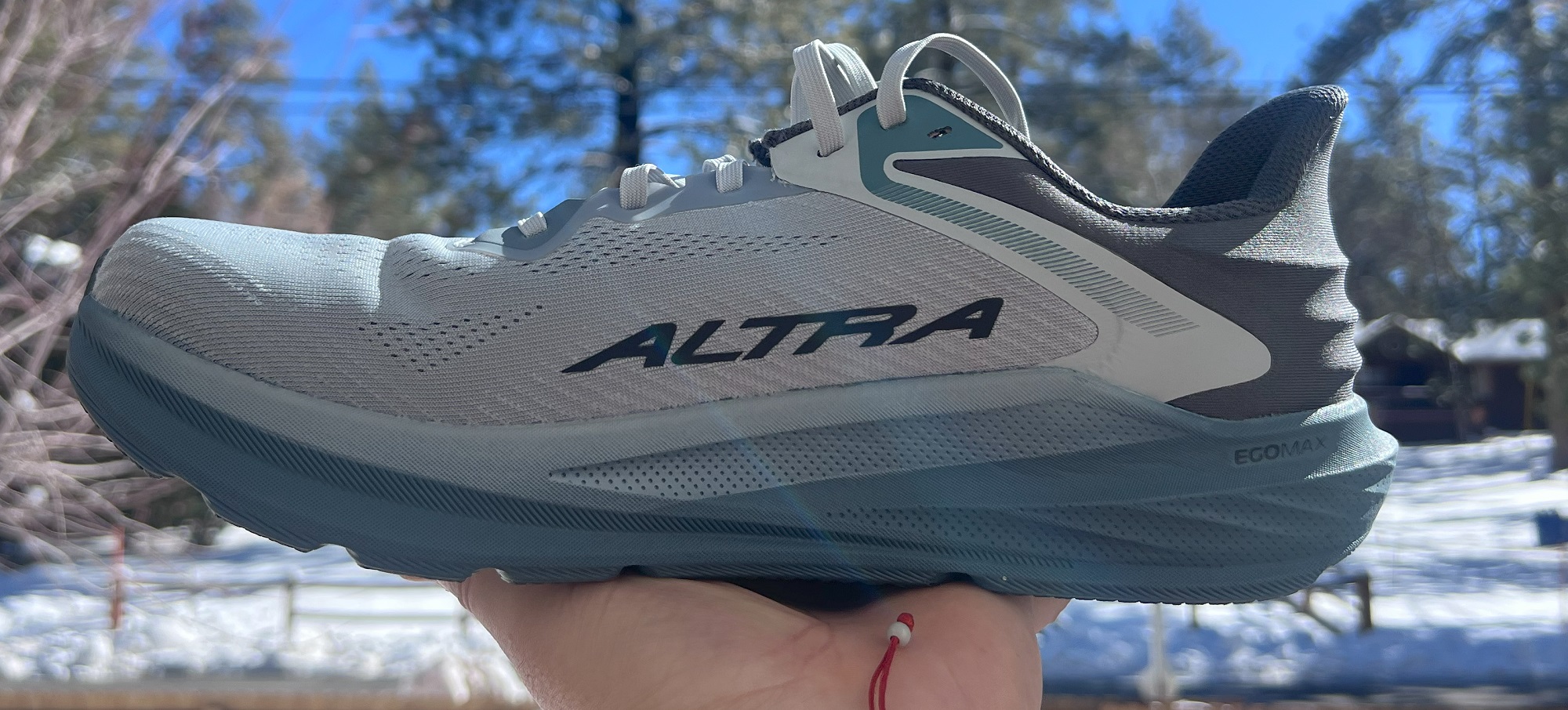
Unlike some of the other shoes on this list, the midsole of the Torin is going to give more of a firm feel underfoot. It’s not super firm but just enough cushion to give the plantar fascia some support!
- Weight: 10.15 oz Men’s, 8.4 oz Women’s
- Heel Drop: 0mm
- Available in 7 colors
- Not available in wide
- Available at Altrarunning.com for $150
- Read our full review of the Altra Torin 8 here >>
Best Trail Shoe for Plantar Fasciitis – Kuru ATOM Trail Shoes
If you’re not familiar, Kuru is a brand that designs shoes specifically for plantar fasciitis. In addition to their walking shoes, there’s a lightweight trail shoe perfect for adventures on the trail.
This shoe is going to have the KURUSOLE technology meant to support and protect your foot.
The curved, heel-cupping design gives your heel pad a little extra support and forms to your foot. If you’re someone who deals with plantar fasciitis, this is exactly the kind of structure that can make a big difference.
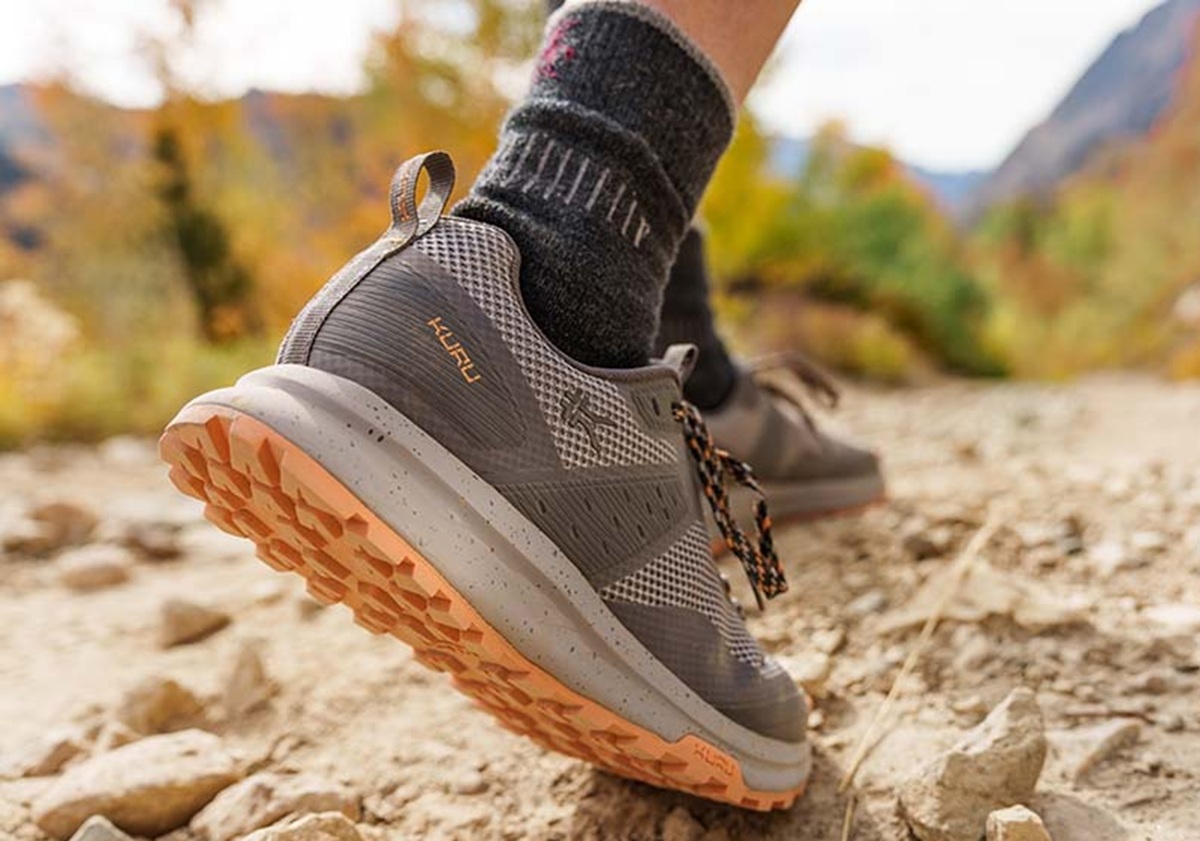
The shoe’s ergonomic design is going to flex and move with you as you run on the trails. While the feel of the shoe may take a little to get used to, at the end of the day your feet are going to thank you!
- Weight: 13.4 oz Men’s, 12.3 oz Women’s
- Heel Drop: 8mm
- Available in 3 colors
- Not available in wide
- Available from Kurufootwear.com for $160
What is Plantar Fasciitis?
Plantar Fasciitis is essentially an inflammation of the plantar fascia, which is a fibrous band of tissue along the sole of the foot that connects the heel bone to the toes
It can cause intense heel pain and is one of the most common causes of heel/foot pain as well. Plantar fasciitis can manifest as stabbing pain that is usually be felt with your first steps in the morning.
The pain normally subsides after getting up and moving, but it may return after long periods of standing or standing up after sitting for a while.
It’s a problem many runners face, in fact you’re more likely to suffer from plantar fasciitis if you’re a long-distance runner. This is due to the repetitive stress we place on that ligament.
Picking the Right Shoes for Plantar Fasciitis
If you’re already suffering from this painful condition, then making sure you’re wearing the right footwear can make a world of difference. Here are some factors to consider when picking the right shoes for plantar fasciitis:
1. Cushioning
Remember that a good level of cushioning will help with pain relief.
A cushioned running shoes will protect the plantar fascia from strain caused by repetitive impact while running. A good running shoe for plantar fasciitis should provide superior shock absorption upon impact.
At the same time, you shouldn’t wear shoes that are too cushioned because they could make your foot and ankle unstable.
In the case of plantar fasciitis, running shoes with balanced or firm cushioning are most preferable.
2. Arch Support
If you have plantar fasciitis, arch support is one of the most important things to look for. Without proper arch support, the problem will persist no matter how good or expensive the shoes are.
As your arch falls down during your foot strike, the entire foot rolls inward which is what your body then tries to correct by tightening up all those other foot and lower leg muscles. It’s also trying to protect you from knee pain.

Arch support comes in various levels depending on the severity of the condition. Some running shoes are better for high arches, while others are better for low arches. Therefore, it is essential to find a shoe that matches your arch type.
If you have low arches or flat feet and overpronation as well as plantar fasciitis, consider stability shoes for mild cases and motion control shoes for severe cases.
A neutral, softer shoe is preferable for those with normal or high arches.
3. Heel Counter
A firm heel counter reduces abnormal stretching of the plantar fascia. It also helps to stabilize and align the feet.
When combined with a sturdy heel counter, a shoe that has a flexible toe box gives the front of the shoe the ability to stretch while still allowing the back of the foot to remain strong and stable throughout the run
Shoes with deep heel cups offer runners with plantar fasciitis not only protection for the heel bone but also a reduction in pronation which can help if you have this painful condition.
Can You Run with Plantar Fasciitis?
As with any injury this is going to be a bit of trial and error. If you can run without pain then enjoy the miles, but as soon as it starts to act up stop. KEEP going with all of the physical therapy exercises whether there is pain or not to keep it at bay.
Some people find that with a solid warm up and taping, they can continue to run.
Others find that they immediately have heel pain when running and that’s a sign to stop and get some lasting treatment.
Read our full article on running with plantar fasciitis for more tips.
For me, adding the Alleviate Arch Massager into my daily routine has made a big difference and the pain is almost non-existent. I know it’s another piece of equipment, but I keep it under my desk and use it throughout the day so it doesn’t feel like another thing added to my to-do list.
Most importantly I want you to know that is IS A PROBLEM To take pain relievers before running. It can cause a host of issues, so you need to find the cause of your pain.



 London Marathon Course Tips + Common London FAQs
London Marathon Course Tips + Common London FAQs